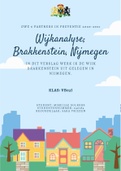Class notes
IEB Pop Art notes
- Course
- Visual Arts
- Institution
- 12th Grade
IEB Visual Arts notes.These notes cover Pop Art’s origins, themes, and characteristics, along with analysis of key artists and their works, including Andy Warhol, Claes Oldenburg, and Roy Lichtenstein. Ideal for a clear, concise overview of the movement
[Show more]








